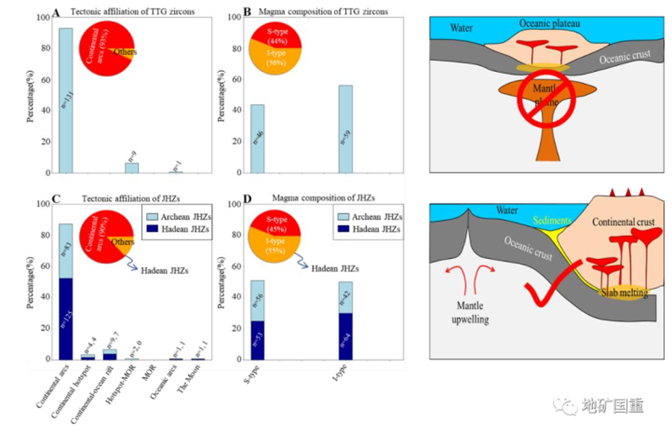Guoxiong Chen1, Timothy Kusky1,2, Lei Luo1, Quanke Li1, and Qiuming Cheng1,3,*
1State Key Laboratory of Geological Processes and Mineral Resources, China University of Geosciences, Wuhan 430074, China
2Center for Global Tectonics, Badong National Observatory and Research Station for Geohazards, School of Earth Sciences, China University of Geosciences, Wuhan 430074, China
3School of Earth Science and Engineering, Sun Yat-sen University, Zhuhai, 51900, China
The tectonic affiliations and magma compositions that formed Earth’s earliest crusts remain hotly debated. Previous efforts toward this goal have relied heavily on determining the provenance of Hadean zircons using low-dimensional discriminant diagrams developed from Phanerozoic samples, which are inadequate for capturing systematic differences without considering secular changes in zircon composition. Here, we developed high-dimensional machine learning (ML) approaches using zircon chemistry data (spanning 19 elements over 4.0 b.y.) to characterize zircons that crystallized in some typical tectonic settings (e.g., arcs, plume-related hotspots, and rifts) and from either igneous (I-type) or sedimentary (S-type) magmas. The proposed ML method, from a nonuniformitarian perspective, identifies the tectonic settings and granitoid types of given zircons (from Archean to Phanerozoic) at a higher prediction accuracy of >89% compared to ∼66%–82% for traditional discriminant diagrams (e.g., U/Yb vs. Y and rare earth elements (REE) + Y vs. P). The ML-based discriminators depend on the systematic differences in zircon chemistry, notably, significant differences in U, Th, and heavy REE for tectonic settings, and P and Hf for I- and S-type magmas. Application of the trained ML models to Hadean zircons from Jack Hills, Australia, suggests that these zircons were mainly crystallized in continental arc–forming magmas (90%) with 45% belonging to S-type melts. This result provides clear evidence of sediment recycling associated with subduction activity in the Hadean.

Original source:Chen G X, Kusky, T., Luo, L., Li, Q.K., Cheng, Q.M*. Hadean Tectonics: Insights from Machine Learning. Geology. 2023;51(8):718-22. https://doi.org/10.1130/G51095.1.